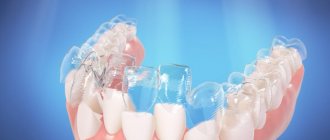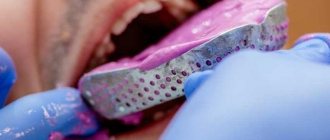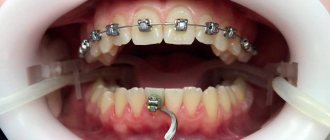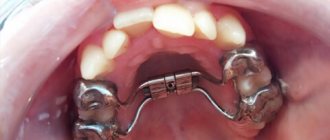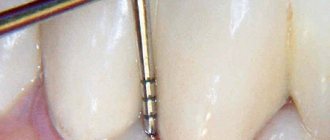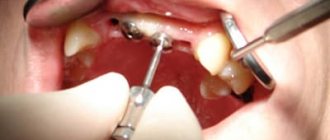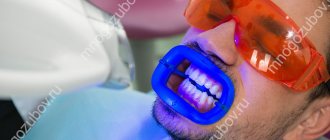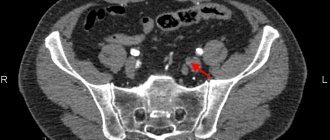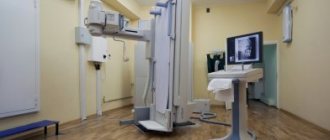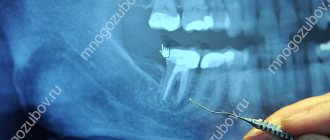Plastering models into an occluder
1. Dilute the plaster, place a small portion of it on a plaster table, and immerse the lower frame of the occluder in the plaster.
2. Place the models on the plaster so that the lower frame of the occluder does not protrude from under the lower model. At the same time, make sure that the occlusal surface of the wax rollers is parallel to the plane of the table.
3. Remove excess plaster from the lower model.
4. Dilute the plaster again, place a pile of plaster on the base of the upper model.
5. Immerse the upper frame of the occluder in plaster until the vertical pin stops in the horizontal platform.
6. Smooth the plaster, removing excess.
7. After the plaster has set, form the occluder.
Requirements for models plastered in an occluder
1. Models should be positioned in the center of the occluder.
2. The lower frame of the occluder should not protrude from under the base of the lower model.
3. The occlusal surface of the rollers should be parallel to the base of the table.
4. The vertical screw of the occluder should rest against the horizontal pad.
5. The occluder must be designed.
6.
Installation of artificial teeth
Artificial teeth in the base of the prosthesis can be placed in two ways - on the edge and on the artificial gum .
Placing teeth on the grinder
Placement of artificial teeth on the inflow can be carried out in the following cases:
- in the presence of a defect in the frontal part of the upper jaw (exception - the first premolar of the upper jaw);
- with a well-defined alveolar process;
- with a shortened upper lip;
- with prognathia.
When placing artificial teeth on a grinder, they are ground directly to the edentulous alveolar process. With this method of installation, it seems that artificial teeth “grow” directly from the alveolar process, since there is no base in the frontal region. Thanks to this, the prosthesis is quite aesthetic in the oral cavity.
Placing teeth on artificial gums
Placement of artificial teeth on artificial gums can be done in any cases, with the exception of those when placement on an indentation is desirable. With this installation method, artificial teeth are installed in the base of the prosthesis. On the vestibular side there is always a base area - artificial gum.
Types of artificial teeth
1. Plastic
2. Porcelain
3. Metal
Metal teeth were used earlier and only in the lateral parts of the lower jaw. These teeth have a lot of weight and therefore are used as weighting agents in prosthetics with complete removable dentures in case of severe atrophy of the alveolar ridge of the lower jaw. Due to the weight of the prosthesis, it is pressed against the prosthetic bed with greater force and is better held on it. Currently, such teeth are not used.
Plastic and porcelain teeth are available in sets (sets):
- front teeth,
- lateral teeth,
- frontal and lateral teeth (for complete removable dentures).
Dental sets can be different in style and color.
Plastic teeth are cheaper than porcelain teeth, but they do a worse job of imitating the hard tissues of natural teeth. In addition, materials such as plastic can cause an allergic reaction. The mechanical strength of plastic teeth is quite high, but they quickly wear out, which leads to a decrease in bite height, as well as chewing efficiency. The plastic teeth are chemically connected to the base, which ensures a strong connection.
Porcelain artificial teeth are more expensive than plastic ones. They perfectly imitate the hard tissues of natural teeth and are biologically indifferent (compatible with the tissues of our body). These teeth have great hardness and, at the same time, fragility, which must be taken into account when working with them. Porcelain teeth do not wear out over time, but errors in determining the height of the bite can lead to discomfort in the temporomandibular joint; In addition, patients may be bothered by the characteristic chattering of teeth when eating and talking. Porcelain teeth are connected to the prosthesis base only mechanically. There are special “devices” for this.
The frontal teeth are called crampon teeth, since they have button-shaped crampons (small cylinders with a cap) on the oral side, with the help of which the tooth is strengthened in the base.
The lateral teeth are called diatoric and are arranged differently. Inside each such tooth there is a pear-shaped cavity, from which additional channels extend to the lateral surfaces of the tooth. During molding, the plastic dough enters this cavity and channels, and during its polymerization, the tooth is reliably strengthened in the base.
diatoric crampon
